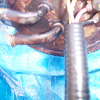volver
Well-Known Member
- Joined
- November 27, 2008
- Messages
- 254
- Reaction score
- 0
- City, State
- Milan, IL Quad City area
- Year, Model & Trim Level
- 1998 XLT AWD
I have begun the M112 supercharger build. I have removed the MAF, TB, EGR, Upper intake manifold, Fuel rail. I have designed a set of adapter plates, they are going to be cut on Monday. I have replaced my fuel injectors with 39 pounds. I am currently waiting for the adapter plates.
I decided to do a compression test. Regardless of the outcome the supercharger is going on.
The driver side of the engine pressure reading ranged 160-180 psi the passenger side reading ranged 140-180psi except for on low at 120 psi.
I am wounding if this is a problem or if it is normal wear? What would have caused this? Cylinder wear, bad valve? How will supercharging effect this problem? Will I get blow by? I am running 5w30 oil, the test was run when the engine was cold.
I decided to do a compression test. Regardless of the outcome the supercharger is going on.
The driver side of the engine pressure reading ranged 160-180 psi the passenger side reading ranged 140-180psi except for on low at 120 psi.
I am wounding if this is a problem or if it is normal wear? What would have caused this? Cylinder wear, bad valve? How will supercharging effect this problem? Will I get blow by? I am running 5w30 oil, the test was run when the engine was cold.










